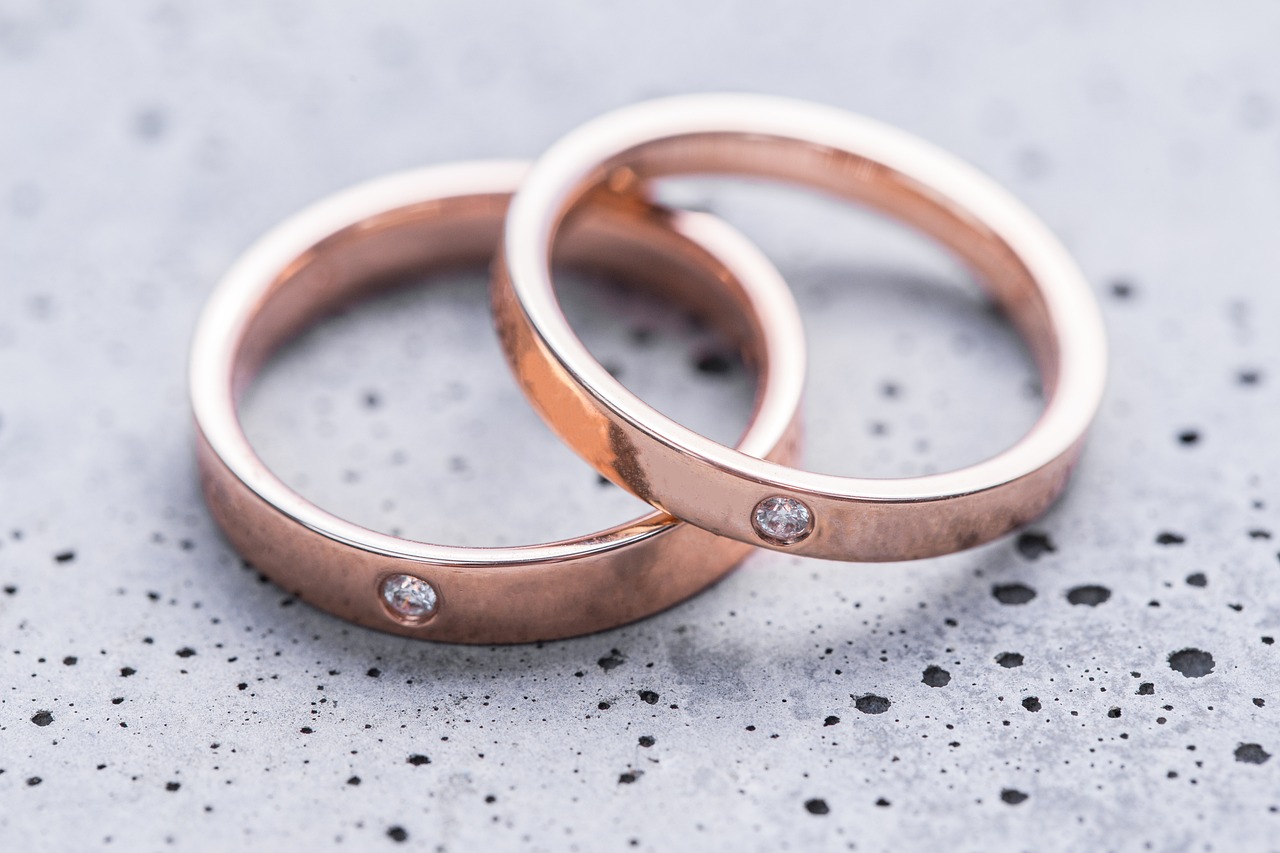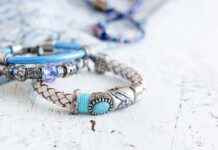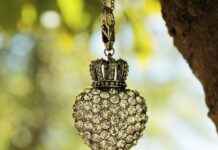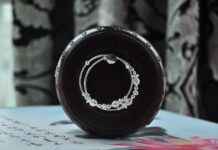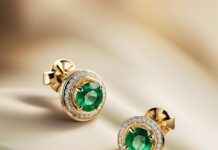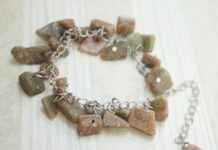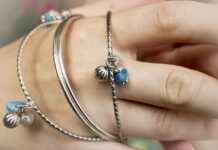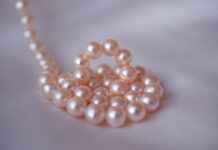This article provides a comprehensive overview of the essential factors to consider when purchasing an engagement ring, ensuring you make an informed choice that reflects love and commitment.
Understanding the 4 Cs of Diamonds
The 4 Cs—Carat, Cut, Color, and Clarity—are crucial for evaluating diamond quality. Each aspect plays a significant role in determining the overall beauty and value of the stone:
- Carat: Refers to the weight of the diamond.
- Cut: Influences how well the diamond reflects light.
- Color: Describes the absence of color in a diamond.
- Clarity: Measures the presence of internal or external flaws.
Choosing the Right Metal for the Band
The choice of metal for an engagement ring band affects both durability and style. Popular options include:
- Gold: Available in yellow, white, and rose variations.
- Platinum: Known for its strength and hypoallergenic properties.
Setting Styles: Which One to Choose?
The setting of an engagement ring significantly influences its appearance. Common styles include:
- Solitaire: A classic choice that showcases a single diamond.
- Halo: Features a center stone surrounded by smaller diamonds for added sparkle.
Budgeting for Your Engagement Ring
Setting a budget is essential when buying an engagement ring. Consider factors such as:
- Average Costs: Understanding typical price ranges can help in budgeting.
- Financing Options: Explore various methods to finance your purchase responsibly.
Custom vs. Ready-Made Rings
Deciding between custom and ready-made rings can be challenging. Custom rings offer personalization, while ready-made options provide convenience and variety.
Where to Buy Your Engagement Ring
Choosing the right retailer is crucial. Consider the pros and cons of:
- Online Retailers: Often provide better prices.
- Local Jewelers: Offer personalized service and expertise.
Understanding Ring Sizes
Getting the correct ring size is essential for comfort. Tips for measuring include:
- How to Measure at Home: Use a piece of string or a ring you already own.
- What to Do If Unsure: Consider asking friends or family for help.
Maintaining Your Engagement Ring
Proper care ensures your ring remains beautiful. Regular cleaning and knowing when to seek professional help are key.
Conclusion: Making the Right Choice
Choosing the perfect engagement ring is a significant decision that symbolizes love and commitment. By considering the factors outlined in this guide, you can make an informed choice that reflects your unique relationship.
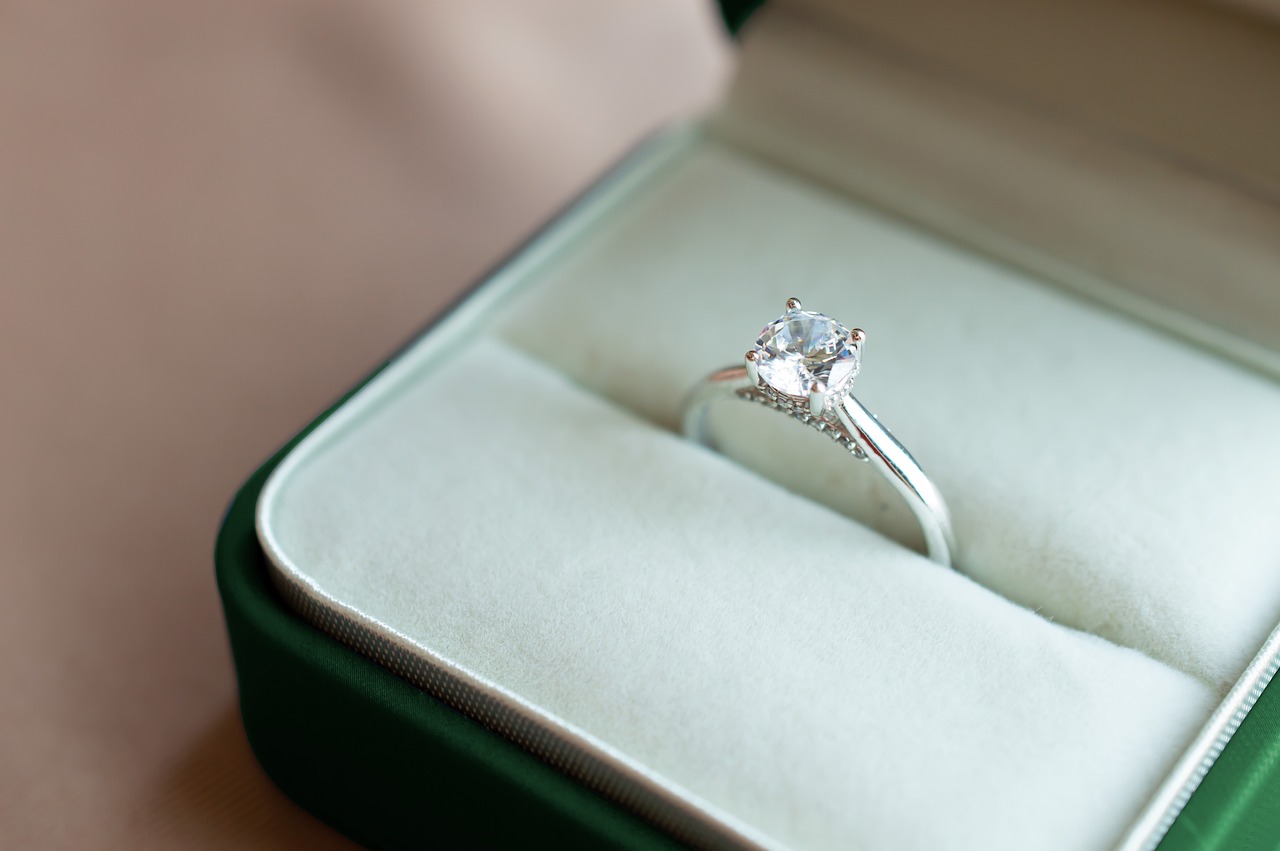
Understanding the 4 Cs of Diamonds
When it comes to purchasing a diamond, understanding the 4 Cs—Carat, Cut, Color, and Clarity—is essential for making an informed decision. Each of these characteristics plays a vital role in determining the overall quality and value of a diamond. This guide will provide you with a deeper insight into each of these factors, ensuring that you choose the perfect stone for your engagement ring.
- Carat: The carat weight of a diamond measures its size. One carat is equivalent to 200 milligrams. While larger diamonds are more rare and often more expensive, it’s important to balance carat weight with the other Cs to find a stone that fits your budget and preferences.
- Cut: The cut of a diamond refers to how well it has been shaped and faceted. A well-cut diamond will reflect light beautifully, enhancing its sparkle. The cut is often considered the most important factor, as it significantly affects the diamond’s brilliance and overall appearance.
- Color: Diamonds come in a variety of colors, with the most sought-after stones being colorless or near-colorless. The Gemological Institute of America (GIA) grades diamond color on a scale from D (colorless) to Z (light yellow or brown). Choosing the right color can enhance the beauty of the diamond and its setting.
- Clarity: Clarity refers to the presence of inclusions or blemishes in a diamond. These imperfections can affect the stone’s appearance and value. Clarity is graded on a scale from Flawless (no inclusions visible under 10x magnification) to Included (inclusions visible to the naked eye). A higher clarity grade typically means a more valuable diamond.
Understanding these four characteristics will empower you to make an educated choice when selecting a diamond. By considering the interplay between carat, cut, color, and clarity, you can find a diamond that not only meets your aesthetic preferences but also fits within your budget.

Choosing the Right Metal for the Band
The metal choice for an engagement ring band is not just a matter of aesthetics; it significantly impacts both durability and overall style. With so many options available, it’s essential to understand the characteristics of each metal to make an informed decision that aligns with your partner’s preferences and lifestyle.
- Gold: A classic choice that comes in various colors, including yellow, white, and rose gold. Each type has its unique attributes. Yellow gold is traditional and warm, while white gold offers a modern look with a hint of silver. Rose gold, with its romantic hue, has seen a surge in popularity.
- Platinum: Known for its exceptional durability and rarity, platinum is a premium choice for engagement rings. It is hypoallergenic and resistant to tarnishing, making it ideal for everyday wear. Its natural white sheen complements diamonds beautifully.
- White Gold: Often confused with platinum, white gold is an alloy that combines gold with other metals like palladium or nickel to achieve its silvery appearance. While it is less expensive than platinum, it may require occasional rhodium plating to maintain its luster.
When selecting the right metal, consider your partner’s lifestyle. For example, if they lead an active life, a more durable option like platinum might be suitable. On the other hand, if they prefer a classic look, yellow gold could be the perfect fit.
In conclusion, understanding the properties of different metals allows you to choose an engagement ring band that not only reflects your partner’s style but also stands the test of time. Whether you opt for the classic allure of gold or the modern elegance of platinum, the right choice will symbolize your love and commitment.
Gold: Classic and Timeless
Gold has long been celebrated as one of the most traditional and cherished choices for engagement rings. Its enduring appeal lies not only in its beauty but also in its rich history and symbolism of love and commitment. This section delves into the various colors and karats of gold, providing you with essential information to help you select the best option for your engagement ring.
Gold comes in several colors, each offering a unique aesthetic that can complement different styles and preferences:
- Yellow Gold: This is the classic choice, known for its warm and rich hue. It has been a popular option for centuries and pairs beautifully with a variety of gemstones.
- White Gold: A modern alternative, white gold is alloyed with metals like palladium or nickel, giving it a sleek and contemporary look. It is often plated with rhodium for added shine and durability.
- Rose Gold: This color has surged in popularity due to its romantic and vintage appeal. The pinkish hue is achieved by alloying gold with copper, resulting in a unique and trendy choice.
When it comes to karats, understanding the difference is crucial for making an informed decision:
- 10K Gold: Contains 41.7% gold and is more durable, making it a budget-friendly option.
- 14K Gold: Comprising 58.3% gold, this is a popular choice for engagement rings due to its balance of durability and gold content.
- 18K Gold: With 75% gold, this option is luxurious and has a richer color, but it is less durable than lower karat options.
Choosing the right gold color and karat for your engagement ring is essential, as it reflects not only your personal style but also your partner’s preferences. Consider their lifestyle and how often they will wear the ring, as this can influence the choice of karat and color.
In conclusion, gold remains a classic and timeless choice for engagement rings, offering a variety of colors and karats to suit every taste. By understanding these options, you can select a ring that beautifully symbolizes your love and commitment.
Yellow Gold vs. White Gold
When it comes to selecting the perfect engagement ring, the choice of metal plays a crucial role in both aesthetics and durability. Among the most popular options are yellow gold and white gold, each offering unique characteristics that cater to different tastes and styles.
Yellow Gold is renowned for its classic and timeless appeal. Its warm, rich hue complements a variety of diamond shapes, enhancing their brilliance. This metal is often associated with traditional values and is a popular choice for those who appreciate vintage or antique styles. The natural yellow color of the gold can create a stunning contrast with diamonds, particularly those with a higher color grade. Additionally, yellow gold is less prone to scratching compared to other metals, making it a durable option for everyday wear.
In contrast, White Gold offers a modern and sophisticated look. It is created by alloying yellow gold with metals such as palladium or nickel, giving it a silvery finish that pairs beautifully with a range of diamond shapes, especially round and princess cuts. The cool tone of white gold can enhance the icy sparkle of diamonds, making them appear larger and more brilliant. White gold is often plated with rhodium to enhance its shine and protect it from tarnishing, although this plating may require periodic reapplication to maintain its luster.
When considering which metal to choose, it is essential to think about your partner’s personal style and lifestyle. For example, if they prefer a classic look, yellow gold may be the ideal choice. However, if they lean towards contemporary designs, white gold could be more suitable. Both metals can beautifully complement various diamond shapes and styles, ensuring that your engagement ring is not only stunning but also a reflection of your partner’s unique taste.
Ultimately, whether you choose yellow or white gold, both options offer beauty and durability, making them excellent choices for an engagement ring that symbolizes your love and commitment.
Rose Gold: A Romantic Choice
Rose gold has emerged as a favored choice for engagement rings, captivating many modern couples with its unique and romantic hue. This beautiful metal, a blend of gold, copper, and sometimes a hint of silver, offers a warm and inviting color that complements a variety of skin tones.
The allure of rose gold lies not only in its aesthetic appeal but also in its symbolism. The soft pinkish hue represents love and affection, making it an ideal choice for a piece that signifies a lifelong commitment. Many couples are drawn to its vintage charm, reminiscent of classic jewelry styles while remaining contemporary.
In terms of durability, rose gold is a practical option. The addition of copper enhances its strength, making it more resistant to scratches and dents compared to traditional yellow gold. This durability ensures that the ring can withstand the rigors of daily wear while maintaining its beauty.
Another appealing aspect of rose gold is its versatility. It pairs beautifully with various gemstones, especially diamonds, which can appear even more striking against the warm tones of the metal. Whether you prefer a simple solitaire or an intricate halo setting, rose gold adds a touch of elegance to any design.
Moreover, rose gold has a rich history that resonates with many couples. Its popularity surged in the early 19th century, and it has since made a significant comeback in modern jewelry design. This historical significance adds a layer of meaning to the choice of a rose gold ring, connecting couples to a timeless tradition.
In conclusion, the appeal of rose gold as an engagement ring option is undeniable. Its romantic hue, durability, and historical significance make it a compelling choice for couples looking to express their love and commitment. As you consider the perfect engagement ring, rose gold stands out as a beautiful and meaningful option.
Platinum: The Premium Choice
Platinum is often considered the premium choice for engagement rings, and for good reason. Its unique properties make it a highly desirable metal for couples looking to symbolize their love and commitment.
One of the most significant advantages of platinum is its durability. Unlike gold or silver, platinum is a dense and heavy metal, which makes it highly resistant to wear and tear. This means that a platinum engagement ring can withstand the rigors of daily life without losing its luster or shape. In fact, platinum is so resilient that it is often used in high-end jewelry and is favored by those who lead active lifestyles.
Another key benefit of platinum is its rarity. It is one of the rarest metals on Earth, making it a unique choice for an engagement ring. This rarity not only adds to its allure but also ensures that your ring remains exclusive and special. When you choose platinum, you are selecting a metal that few others may have, which can make your engagement ring even more meaningful.
Additionally, platinum is hypoallergenic, making it an excellent option for those with sensitive skin. Many people experience reactions to metals like nickel, which is often alloyed with gold. However, platinum is pure and does not contain these irritating metals, ensuring comfort for the wearer.
Furthermore, the color of platinum is another appealing factor. Its natural white sheen enhances the brilliance of diamonds and other gemstones, allowing them to shine even more brightly. This makes platinum an ideal choice for showcasing a stunning diamond, as it complements the stone beautifully.
In conclusion, choosing platinum for your engagement ring means opting for a metal that embodies strength, rarity, and elegance. Its durability ensures that it will last a lifetime, while its hypoallergenic properties provide comfort. If you are looking for a ring that stands out and symbolizes your everlasting love, platinum may just be the perfect choice.
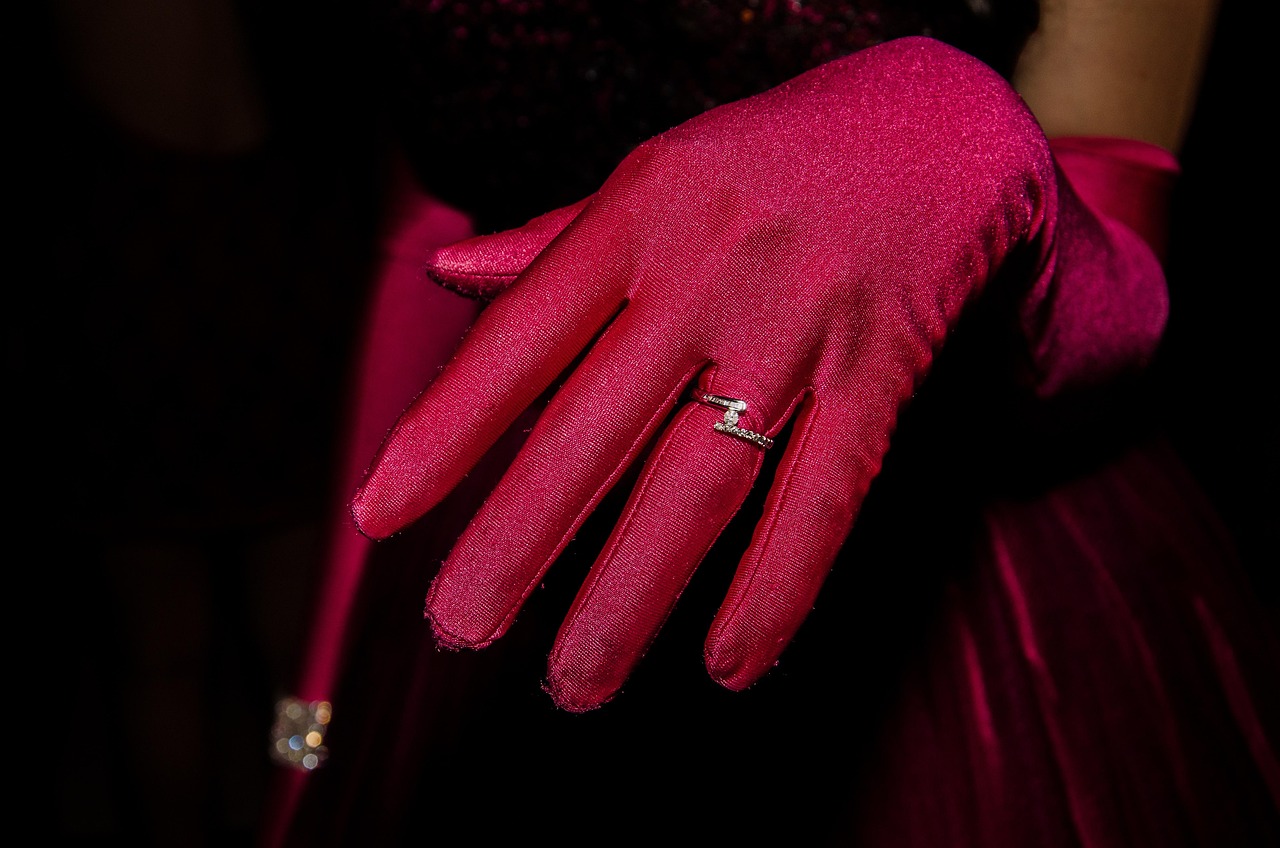
Setting Styles: Which One to Choose?
The setting of an engagement ring plays a crucial role in its overall appearance and character. This choice can dramatically alter the ring’s style, enhancing the beauty of the diamond or gemstone it holds. Below, we will explore some of the most popular engagement ring settings, including solitaire, halo, and three-stone settings, each offering unique features and benefits.
- Solitaire Setting: The solitaire setting is perhaps the most classic and timeless choice. It showcases a single diamond, allowing its brilliance to take center stage. This minimalist approach emphasizes the stone’s quality and size, making it an enduring favorite among couples.
- Halo Setting: For those seeking a bit more sparkle, the halo setting is an excellent option. In this design, a central diamond is surrounded by a ring of smaller diamonds, enhancing its overall brilliance and creating a stunning visual effect. This style is particularly appealing for those who want their engagement ring to have a more dramatic and luxurious look.
- Three-Stone Setting: The three-stone setting symbolizes the past, present, and future of a relationship. It features a trio of stones, typically with a larger center stone flanked by two smaller ones. This design not only adds visual interest but also carries significant sentimental value, making it a meaningful choice for many couples.
Choosing the right setting is essential, as it reflects personal style and preferences. Each of these styles has its own charm and can be customized further with different metals and stone shapes. Ultimately, the best choice will resonate with your partner’s taste and your shared love story.
Solitaire: The Classic Choice
Solitaire settings have long been regarded as a classic choice for engagement rings, captivating couples with their elegant simplicity. This design features a single diamond or gemstone, allowing it to take center stage and shine without distraction. The timeless appeal of the solitaire setting lies in its ability to symbolize a couple’s unique love story, making it a favored option for many.
The elegance of a solitaire ring is undeniable. The single stone can vary in size, cut, and quality, providing couples with the flexibility to choose a piece that fits their style and budget. This design not only highlights the beauty of the stone but also allows for a variety of band styles, from classic to modern, ensuring that each ring is as unique as the love it represents.
One of the primary reasons why solitaire settings remain popular is their versatility. They can be crafted in various metals, including gold, white gold, and platinum, allowing couples to select a material that resonates with their personal tastes. Additionally, solitaire rings can be paired with various wedding bands, enhancing their overall aesthetic and ensuring they complement one another beautifully.
Moreover, the solitaire setting has a rich history, often associated with traditional values and enduring love. Its straightforward design conveys a sense of commitment and sincerity, making it a meaningful choice for couples embarking on their journey together. As trends come and go, the solitaire ring remains a steadfast symbol of love and devotion.
In conclusion, the solitaire setting is not just a ring; it represents a promise, a commitment, and a timeless love that endures through the years. Whether you are drawn to its simplicity or its ability to showcase a stunning stone, a solitaire engagement ring is a choice that will always be in style.
Halo Settings: Adding Sparkle
Halo settings are a captivating choice for engagement rings, designed to enhance the brilliance of the center stone. This style features a central diamond or gemstone surrounded by a halo of smaller stones, creating a stunning visual effect that draws the eye. The appeal of halo settings lies not only in their beauty but also in their ability to amplify the perceived size and sparkle of the main stone.
One of the key benefits of halo settings is their versatility. They can complement various diamond shapes, including round, princess, and oval cuts. The surrounding stones can be selected to match the center stone or offer a striking contrast, allowing for a personalized touch. This customization makes halo settings a popular choice among couples looking for a unique engagement ring that reflects their individual style.
In addition to their aesthetic appeal, halo settings can also provide a sense of protection for the center stone. The surrounding halo can shield the main diamond from potential damage, making it a practical choice for those who lead an active lifestyle. Furthermore, the arrangement of the smaller stones can create a brilliant sparkle that enhances the overall look of the ring, giving it a glamorous appearance that is hard to resist.
For couples who desire extra sparkle in their engagement ring, halo settings are an excellent option. The combination of a central stone with a halo of smaller diamonds not only increases the ring’s brilliance but also adds a touch of elegance and sophistication. Whether you prefer a classic design or a more modern interpretation, halo settings offer a timeless appeal that continues to captivate.
In conclusion, choosing a halo setting for your engagement ring can be a decision that combines beauty, durability, and personalization. With their striking visual impact and ability to enhance the center stone’s brilliance, halo settings remain a favored choice for many couples embarking on their journey of love and commitment.
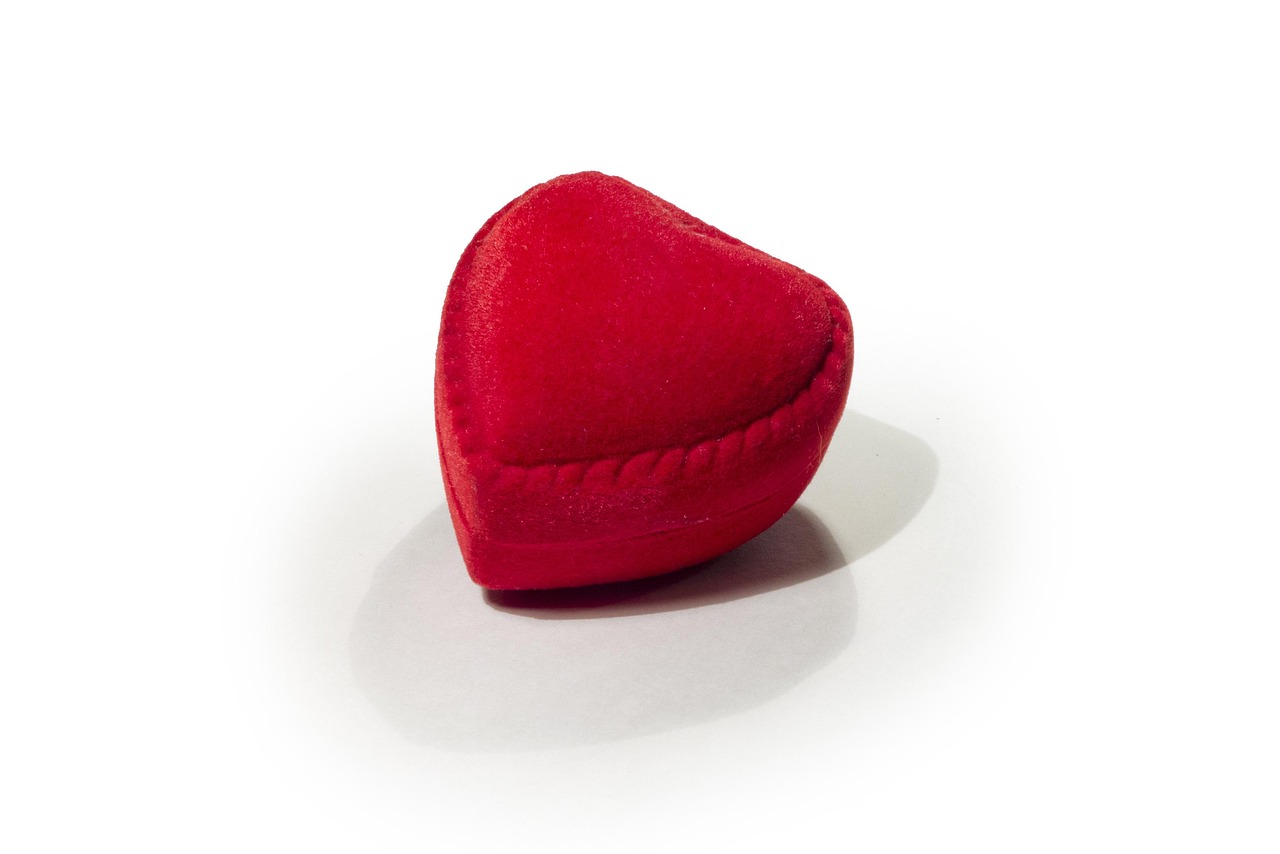
Budgeting for Your Engagement Ring
When it comes to buying an engagement ring, setting a budget is a critical first step. Understanding your financial limits can help you make a purchase that reflects your commitment without causing unnecessary stress. Here are some practical tips to help you determine your spending limit while still ensuring you get a high-quality ring.
- Evaluate Your Financial Situation: Take a close look at your finances. Consider your savings, monthly expenses, and any upcoming financial obligations. This will give you a clearer picture of how much you can comfortably allocate towards an engagement ring.
- Research Average Prices: Familiarize yourself with the average costs of engagement rings in your area. This will help you set realistic expectations. For instance, the average engagement ring can range from $3,000 to $10,000 depending on various factors such as the diamond’s quality and the ring’s design.
- Consider the 3-Month Rule: A common guideline suggests spending roughly three months’ salary on an engagement ring. However, this is just a guideline and should be adjusted based on your personal financial situation and values.
- Prioritize Quality Over Size: While it may be tempting to focus on the carat size of the diamond, remember that the cut, color, and clarity of the stone are equally important. A smaller diamond with excellent qualities can be more stunning than a larger stone of lower quality.
- Explore Financing Options: If your ideal ring exceeds your budget, consider financing options such as layaway plans or low-interest credit. This can help you manage the cost without sacrificing quality.
Ultimately, the goal is to find a balance between what you can afford and what will make your partner happy. By taking the time to establish a budget, you can ensure that your engagement ring purchase is a thoughtful and meaningful investment.
Understanding Average Costs
When embarking on the journey to purchase an engagement ring, understanding the average costs associated with these precious items is essential. This section aims to provide you with a clear breakdown of what you can expect to spend, helping you to make an informed decision that aligns with your budget and preferences.
Engagement ring prices can vary significantly based on several factors, including the quality of the diamond, the metal used for the band, and the design style. On average, couples in the United States spend between $3,000 and $5,000 on an engagement ring. However, some may opt for more affordable options, while others may invest significantly more.
| Category | Price Range |
|---|---|
| Basic Rings | $1,000 – $2,500 |
| Mid-Range Rings | $2,500 – $5,000 |
| High-End Rings | $5,000 – $10,000+ |
When considering your budget, it’s important to think about the 4 Cs of diamonds—Carat, Cut, Color, and Clarity—as these will significantly impact the price. For instance, a larger carat weight typically means a higher price, but the cut can also influence how beautiful the diamond appears, regardless of its size.
Additionally, the choice of metal for the band can affect the overall cost. Platinum rings, for example, tend to be more expensive than gold or silver due to their durability and rarity.
Ultimately, understanding these factors can help you set a realistic budget. Remember, an engagement ring is a symbol of love and commitment, so choose one that resonates with your partner’s style and your financial capabilities.
Financing Options: What to Consider
When it comes to purchasing an engagement ring, exploring financing options can significantly ease the financial burden. Understanding your choices allows you to make a responsible decision that aligns with your budget and financial situation. Below, we discuss several methods to finance your engagement ring purchase effectively.
- Credit Cards: Many couples opt to use credit cards for their engagement ring purchases. Look for cards that offer 0% introductory APR on purchases, which can help you spread out payments without accruing interest during the promotional period.
- Personal Loans: Taking out a personal loan can be a viable option for financing your engagement ring. This method typically offers lower interest rates compared to credit cards and allows for fixed monthly payments, making budgeting easier.
- Store Financing: Many jewelry retailers provide financing plans directly through their stores. These plans often include promotional offers, such as deferred interest, which can be beneficial if you pay off the balance within a specified timeframe.
- Layaway Plans: Some stores offer layaway options, allowing you to pay for the ring in installments before taking it home. This method can help you avoid debt while still securing the ring you desire.
- Peer-to-Peer Lending: This alternative financing method connects borrowers with individual investors. It can provide competitive interest rates and flexible terms, making it an attractive option for financing your engagement ring.
Before selecting a financing option, it’s crucial to assess your overall financial health. Consider factors such as your credit score, monthly budget, and long-term financial goals. By doing so, you can choose a financing solution that not only fits your immediate needs but also supports your financial stability in the future.
In conclusion, financing your engagement ring purchase can make the experience more manageable. By exploring various options and understanding their implications, you can make a well-informed decision that reflects your love and commitment without compromising your financial well-being.
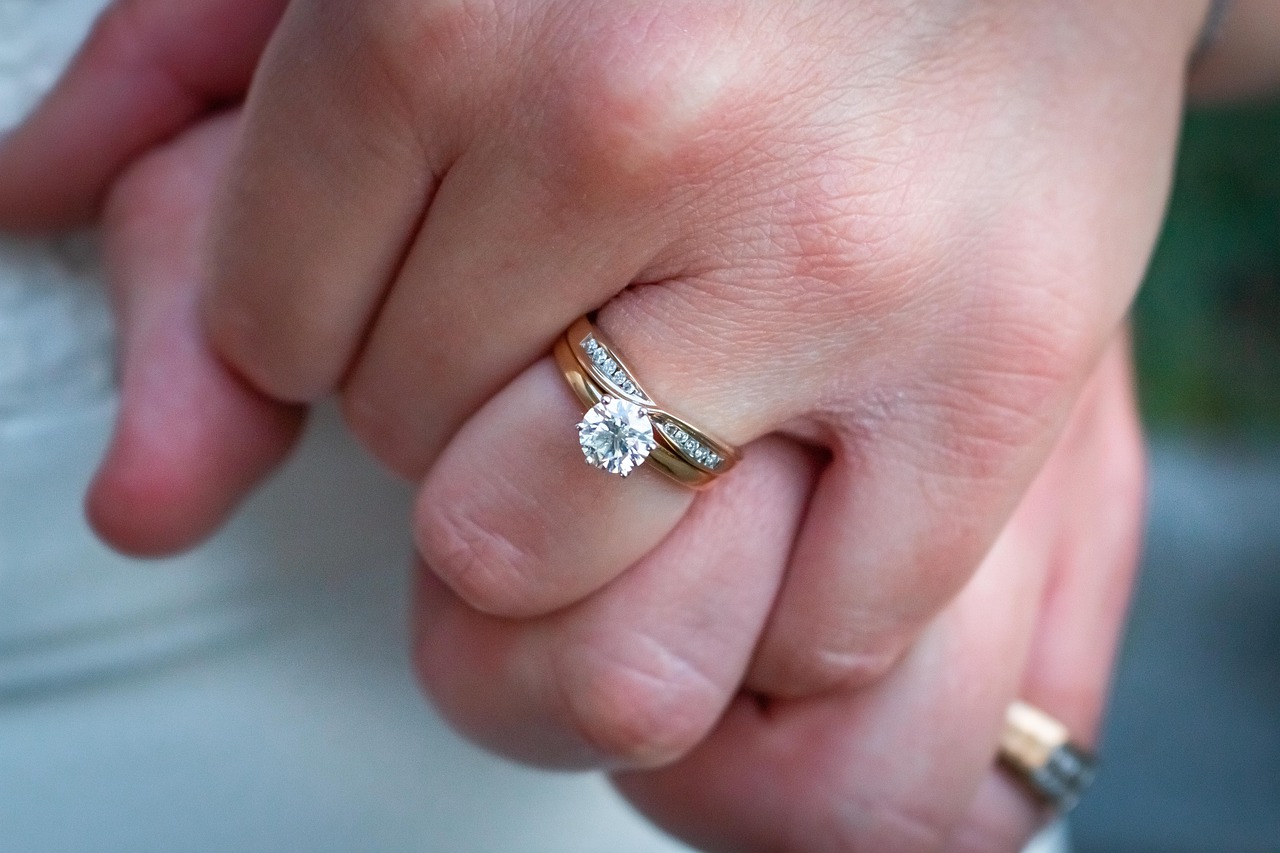
Custom vs. Ready-Made Rings
Deciding between custom and ready-made rings can be a significant challenge for many couples. Understanding the advantages and disadvantages of each option is crucial in making a well-informed decision that aligns with your personal preferences and budget.
- Personalization: Custom rings allow you to create a unique piece that reflects your partner’s individual style and preferences. You have the freedom to choose every detail, from the shape of the diamond to the type of metal used.
- Quality Control: When you design a custom ring, you can ensure that every component meets your quality standards. This can lead to a higher quality overall product.
- Sentimental Value: A custom ring can carry more emotional significance as it is specifically designed for your partner, making it a one-of-a-kind symbol of your love.
- Time-Consuming: The process of designing and creating a custom ring can take longer than purchasing a ready-made option, which may not be ideal if you are on a tight timeline.
- Higher Costs: Custom rings often come with a higher price tag due to the bespoke design process and the intricacies involved.
- Convenience: Ready-made rings are available for immediate purchase, making them ideal for those who need a ring quickly.
- Variety: There is a wide selection of styles and designs available, allowing you to explore numerous options without the need for extensive planning.
- Less Personalization: While there are many choices, ready-made rings may not fully capture your partner’s unique style or preferences.
- Quality Variability: The quality of ready-made rings can vary significantly, so it is essential to do thorough research and choose reputable retailers.
Ultimately, the choice between custom and ready-made rings depends on your priorities, budget, and timeline. By weighing the pros and cons of each option, you can make an informed decision that best represents your love and commitment.
Benefits of Custom Rings
When it comes to choosing an engagement ring, custom rings offer a remarkable opportunity for personalization. Unlike ready-made options, custom engagement rings are designed specifically to reflect your partner’s unique style and preferences. This subsection will explore the numerous advantages of creating a one-of-a-kind piece that symbolizes your love and commitment.
- Personal Touch: Custom engagement rings allow you to incorporate elements that are meaningful to you and your partner. Whether it’s a specific gemstone, an engraving, or a unique design, the result is a ring that tells your unique love story.
- Perfect Fit: One of the primary benefits of a custom ring is the ability to ensure the perfect fit. You can select the band width, shape, and size that fits comfortably on your partner’s finger, eliminating the need for resizing later.
- Quality Control: When you opt for a custom ring, you have complete control over the materials used. You can choose high-quality diamonds and metals, ensuring that your ring is not only beautiful but also durable and long-lasting.
- Unique Design: Custom rings can be designed to suit any style, from vintage to modern. This flexibility allows you to create a piece that perfectly matches your partner’s taste, making it a true reflection of their personality.
- Emotional Value: A custom engagement ring carries a special emotional weight. The thought and effort put into designing a unique piece can make it even more cherished over time, symbolizing the love and commitment behind it.
In conclusion, choosing a custom engagement ring not only provides the advantage of personalization but also ensures that the ring is a true representation of your relationship. By investing in a unique piece tailored to your partner’s style, you create a lasting symbol of your love that they will treasure forever.
Ready-Made Rings: Convenience and Variety
Ready-made rings have become a popular choice for many couples due to their convenience and variety. In this section, we will explore the numerous benefits of ready-made rings and what you should consider when shopping for one.
One of the primary advantages of ready-made rings is the immediate availability. Unlike custom rings, which can take weeks or even months to create, ready-made options allow you to walk into a store and leave with a ring on the same day. This is particularly beneficial for those who may be planning a surprise proposal or are on a tight timeline.
Additionally, ready-made rings come in a wide selection of styles, designs, and price ranges. Whether you prefer a classic solitaire, a modern halo, or something more unique, you are likely to find a ring that fits your vision. This variety means you can explore different options without the pressure of designing a custom piece.
When shopping for ready-made rings, it’s essential to keep a few factors in mind:
- Quality: Always check the quality of the materials used, including the metal and the stone. Look for certifications, especially for diamonds.
- Comfort: Ensure that the ring fits comfortably on your finger. A well-fitting ring is crucial for daily wear.
- Return Policy: Understand the store’s return policy in case the ring does not meet your expectations after purchase.
- Price Comparison: Don’t hesitate to compare prices across different retailers to ensure you are getting the best deal.
In conclusion, ready-made rings offer a practical solution for couples looking for a beautiful and meaningful piece of jewelry without the wait. By considering the quality, comfort, and options available, you can find the perfect ring that symbolizes your love and commitment.
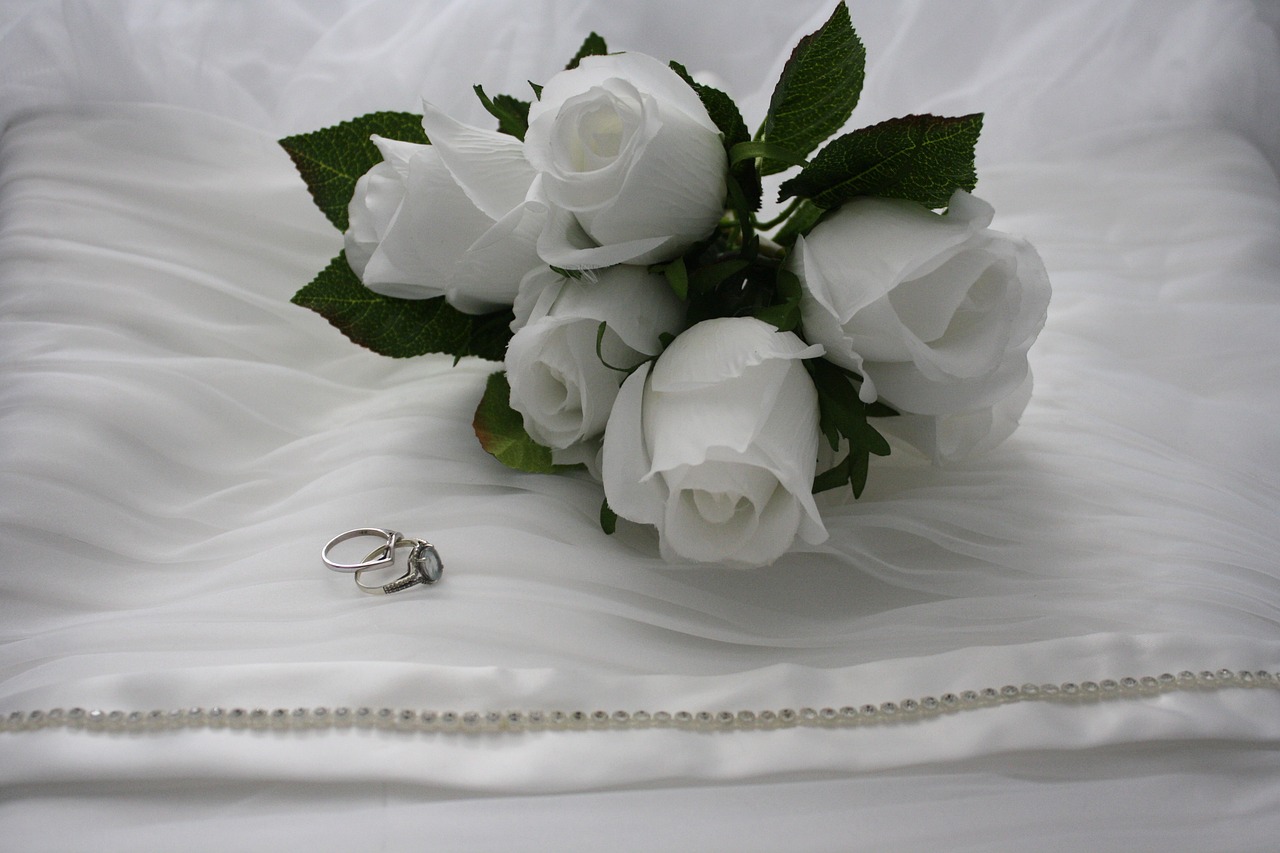
Where to Buy Your Engagement Ring
Choosing the right retailer is essential for a successful engagement ring purchase. The options available can greatly influence your experience and satisfaction with the final product. This section will explore various purchasing avenues, including online retailers and brick-and-mortar stores, to help you make an informed decision.
Shopping for an engagement ring online provides unparalleled convenience. You can browse a vast selection of styles, settings, and prices from the comfort of your home. Many online retailers offer competitive pricing due to lower overhead costs, meaning you might find a better deal compared to traditional stores. However, it’s crucial to consider the following:
- Return Policies: Always check the return policy before making a purchase. A flexible return policy can ease concerns about buying a ring without seeing it in person.
- Customer Reviews: Reading reviews from previous customers can provide insights into the retailer’s credibility and the quality of their products.
- Certification: Ensure that the diamonds and gemstones come with proper certification from recognized grading laboratories.
In contrast, shopping at a local jeweler offers a more personalized experience. Here are some advantages of visiting a physical store:
- Hands-On Experience: You can see and try on rings, allowing you to assess the quality and comfort of the piece.
- Expert Guidance: Knowledgeable staff can provide valuable insights and answer any questions you may have.
- Local Support: Supporting local businesses can foster community relations and often leads to better customer service.
Ultimately, the choice between online and brick-and-mortar retailers depends on your personal preferences and comfort level. Consider what factors are most important to you, whether it’s price, convenience, or personalized service.
Online Retailers: Pros and Cons
In today’s digital age, purchasing an engagement ring online has become increasingly popular among couples. The allure of convenience and often better pricing makes online shopping a tempting choice. However, like any purchasing decision, it comes with its own set of advantages and potential drawbacks. This section delves into the various aspects of buying an engagement ring online to help you make an informed decision.
- Advantages of Buying Online
- Convenience: Shopping from the comfort of your home allows you to browse a wide selection at any time, without the pressure of salespeople.
- Better Prices: Online retailers often have lower overhead costs, which can translate into more competitive pricing compared to traditional jewelry stores.
- Wider Selection: The internet opens up access to a vast array of styles, settings, and gemstones that might not be available locally.
- Customer Reviews: Online platforms typically feature reviews and ratings from previous buyers, providing valuable insights into the quality and service of the retailer.
- Potential Drawbacks
- Lack of Personal Touch: Shopping online may lack the personalized experience and expert guidance that local jewelers can provide.
- Difficulty in Assessing Quality: It can be challenging to evaluate the quality of the ring without seeing it in person, which may lead to uncertainty.
- Return Policies: Some online retailers may have strict return policies, making it difficult to return or exchange if the ring does not meet expectations.
- Shipping Risks: There is always a risk of damage or loss during shipping, which can be a concern for high-value items like engagement rings.
In conclusion, while buying an engagement ring online offers numerous advantages such as convenience, better prices, and a wider selection, it is essential to consider the potential drawbacks. Evaluating the retailer’s reputation, return policy, and shipping options can help mitigate some of these risks. Ultimately, whether you choose to shop online or at a local jeweler, the most important factor is ensuring that the ring reflects your love and commitment.
Local Jewelers: Personalized Service
When it comes to purchasing an engagement ring, one of the most significant decisions you can make is to support local jewelers. Unlike large chain stores, local jewelers offer personalized service and unparalleled expertise that can enhance your buying experience.
One of the primary benefits of choosing a local jeweler is the personal touch they provide. You have the opportunity to work directly with an expert who can understand your specific needs, preferences, and budget. This level of service allows for a more tailored shopping experience, ensuring that the ring you choose truly reflects your partner’s style and your relationship.
Local jewelers often have a wealth of knowledge about gemstones and craftsmanship. They can guide you through the 4 Cs of diamonds—Carat, Cut, Color, and Clarity—helping you make an informed decision. Their expertise means they can also offer insights into the latest trends and timeless styles, making your selection process much easier.
Additionally, supporting local businesses contributes to your community’s economy. When you purchase from a local jeweler, you are investing in your neighborhood and helping to keep small businesses thriving. This connection often leads to a more meaningful purchase, as you know your money is going to someone who cares about their craft and community.
Moreover, local jewelers frequently offer customization options. If you have a specific design in mind, they can help bring your vision to life, creating a one-of-a-kind piece that tells your unique love story. This level of customization is often not available at larger retailers, where mass-produced items dominate.
In conclusion, choosing to buy your engagement ring from a local jeweler not only ensures a personalized shopping experience but also supports your community and provides access to expert knowledge. By making this choice, you can find a ring that perfectly symbolizes your love and commitment.
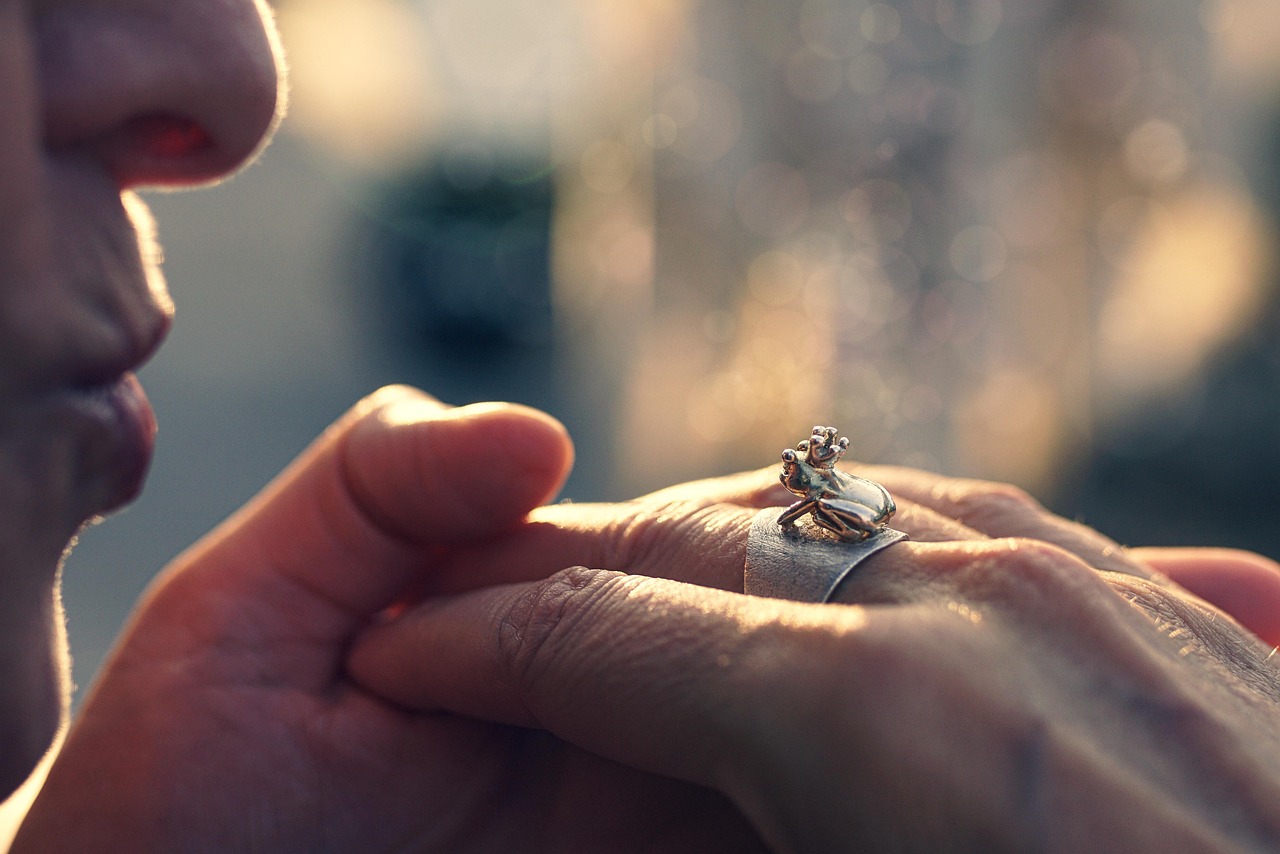
Understanding Ring Sizes
Getting the correct ring size is essential for ensuring comfort and wearability. An ill-fitting ring can lead to discomfort, loss, or even damage to the ring itself. This section provides valuable tips on how to accurately determine your partner’s ring size, making the engagement ring purchasing process smoother.
- Use a Ring Size Chart: One of the easiest ways to find the right size is by using a ring size chart. You can print one from the internet and compare it with a ring your partner already owns. Make sure the existing ring fits well on the correct finger.
- Measure at Different Times: Fingers can swell or shrink depending on the time of day and temperature. It’s best to measure your partner’s ring size at different times to get an average size.
- String or Paper Method: If you don’t have a ring size chart, you can use a piece of string or a strip of paper. Wrap it around the finger and mark where it overlaps. Measure the length with a ruler and compare it to a ring size chart.
- Ask for Help: If you’re still unsure, consider asking a close friend or family member of your partner for assistance. They might have insights or even know your partner’s ring size.
- Visit a Jeweler: If possible, take your partner to a jeweler under the pretense of shopping for something else. Jewelers can provide an accurate measurement and also offer advice on styles and settings.
If you’re unsure about the size, it’s better to choose a slightly larger size, as resizing a ring to be smaller is easier than making it larger. Remember, the goal is to find a size that is both comfortable and secure.
In conclusion, taking the time to determine the correct ring size will ensure that your partner’s engagement ring is a perfect fit, symbolizing your love and commitment.
How to Measure Ring Size at Home
Measuring ring size at home can be a straightforward process if you follow the right techniques. This guide provides step-by-step instructions to ensure you achieve an accurate measurement without the need for a professional jeweler.
Before you start, gather the following materials:
- A piece of string or a strip of paper
- A ruler or a measuring tape
- A pen or marker
Now, follow these simple steps:
- Prepare the String or Paper: Cut a strip of string or paper about 6 inches long. Ensure it is narrow enough to wrap around the finger comfortably.
- Wrap It Around Your Finger: Take the strip and wrap it around the base of the finger where the ring will sit. Make sure it is snug but not too tight.
- Mark the Overlap: Use a pen or marker to mark the point where the string or paper overlaps.
- Measure the Length: Unwrap the string or paper and lay it flat. Use a ruler to measure the length from the end to the marked point in millimeters.
- Find Your Size: Use a ring size chart to convert the measurement into a ring size. Most charts will provide sizes based on the circumference you measured.
Additional Tips:
- Measure your finger at the end of the day when it is likely to be its largest.
- Consider the width of the ring; wider bands may require a slightly larger size.
If you are still uncertain about the size, consider borrowing a ring from your partner (if possible) and measuring its inner diameter with a ruler. This method can provide a quick and easy reference for the correct size.
By following these steps, you can confidently measure your ring size at home, ensuring that your engagement ring fits perfectly.
What to Do If You’re Unsure
When it comes to purchasing an engagement ring, ensuring the correct size is crucial. However, if you find yourself unsure about the ring size, there are several strategies you can employ to navigate this delicate situation without ruining the surprise.
- Subtlety is Key: Try to engage in casual conversations about jewelry preferences. You might ask your partner about their favorite styles or even subtly inquire about their ring size while discussing a friend’s recent engagement.
- Look for Clues: Pay attention to the rings your partner currently wears. If they wear rings on their other fingers, you can borrow one (with caution) to get a size estimate. Just be sure to return it before they notice!
- Ask Friends or Family: If you are close to your partner’s friends or family, consider reaching out to them for help. They may have insights into your partner’s size or can assist in discreetly measuring.
- Use a Ring Size Chart: If you have access to a ring they already wear, you can compare its size against a standard ring size chart. This can give you a good approximation without having to ask directly.
- Consider Adjustability: Some engagement rings can be resized later, so if you’re torn between two sizes, it might be wise to lean towards the larger option. This way, you can adjust it later for a perfect fit.
In conclusion, while it can be challenging to determine the right ring size without giving away the surprise, using these tips can help you approach the situation tactfully. Remember, the thought and effort you put into choosing the perfect ring will ultimately make the moment even more special.

Maintaining Your Engagement Ring
Proper care is essential to ensure that your engagement ring remains beautiful and retains its value over the years. This section provides a comprehensive guide on maintenance tips and effective cleaning methods to keep your ring in top condition.
Regular Cleaning Techniques
To maintain the sparkle of your engagement ring, regular cleaning is crucial. Here are some simple at-home cleaning methods:
- Soap and Water Solution: Mix a few drops of mild dish soap in warm water. Soak your ring for about 20-30 minutes, then gently scrub with a soft toothbrush. Rinse thoroughly and dry with a lint-free cloth.
- Ammonia Solution: For a deeper clean, mix one part ammonia with six parts water. Soak your ring for a few minutes, then brush gently and rinse well. This method is effective for removing stubborn grime.
- Ultrasonic Cleaners: If you have access to an ultrasonic cleaner, it can provide a thorough clean. However, be cautious with soft gemstones that may get damaged.
When to Seek Professional Help
While regular at-home cleaning is important, there are times when you should consult a professional:
- If you notice any loose stones or damage to the setting, it’s crucial to have it inspected immediately.
- Consider a professional cleaning every 6-12 months to remove buildup that home methods might miss.
- If your ring has lost its shine despite regular cleaning, a jeweler can restore its brilliance.
Storage Tips
Proper storage is also vital for maintaining your engagement ring’s condition. Always store your ring in a soft pouch or a dedicated jewelry box to prevent scratches. Avoid placing it in direct sunlight or humid areas to preserve its quality.
Conclusion
By following these maintenance tips and cleaning methods, you can ensure that your engagement ring remains as stunning as the day you first received it. Regular care not only enhances its beauty but also extends its lifespan, making it a cherished symbol of your love for years to come.
Regular Cleaning Techniques
Maintaining the beauty and brilliance of your engagement ring is essential for preserving its sentimental value. One of the most effective ways to achieve this is through regular cleaning. Over time, dirt, oils, and other residues can accumulate on the ring, dulling its shine. Here, we present some easy at-home cleaning methods that will help keep your engagement ring looking as radiant as the day you received it.
- Soapy Water Solution: Mix a few drops of mild dish soap with warm water. Soak your ring for about 20-30 minutes, then gently scrub it with a soft toothbrush. Rinse thoroughly under warm running water and dry with a soft cloth.
- Baking Soda Paste: Create a paste using baking soda and water. Apply it to your ring using a soft cloth or brush, then rinse well. This method is particularly effective for removing stubborn tarnish.
- Ammonia Solution: For a deeper clean, mix one part ammonia with six parts water. Soak your ring for a few minutes, then gently scrub. Be cautious with this method, as ammonia can be harsh on some stones.
- Ultrasonic Cleaners: If you have access to an ultrasonic cleaner, this device can effectively remove dirt and grime. Just be sure to check if your ring’s stones are safe for ultrasonic cleaning.
In addition to these cleaning methods, it’s important to handle your ring with care. Avoid exposing it to harsh chemicals or wearing it during activities that could cause damage, such as heavy lifting or swimming. Regularly inspecting your ring for loose stones or damage is also advisable.
By incorporating these simple cleaning techniques into your routine, you can ensure that your engagement ring remains a stunning symbol of love and commitment for years to come.
When to Seek Professional Help
When it comes to maintaining the beauty and integrity of your engagement ring, knowing when to seek professional help is essential. Regular upkeep is crucial, but there are specific signs that indicate it’s time to consult a professional jeweler for cleaning or inspection.
- Loss of Sparkle: If your ring has lost its luster and appears dull, it may be time for a professional cleaning. Over time, dirt and oils can accumulate, diminishing the diamond’s brilliance.
- Visible Damage: Any noticeable scratches, chips, or dents on the metal or stone should prompt an immediate visit to a jeweler. These imperfections can worsen if left unattended.
- Loose Stones: If you notice that your diamond or other stones are shifting or feel loose, it’s crucial to have them secured. A professional can tighten the settings to prevent loss.
- Discoloration: Changes in the color of the metal, such as tarnishing in silver or discoloration in white gold, may require professional polishing or rhodium plating.
- Routine Check-ups: Just like a car needs regular maintenance, your ring benefits from periodic professional inspections. Aim for at least once a year to ensure everything is in optimal condition.
In conclusion, paying attention to these signs can help maintain your engagement ring’s beauty and longevity. Regular professional care not only enhances its appearance but also ensures that it remains a cherished symbol of your love for years to come.
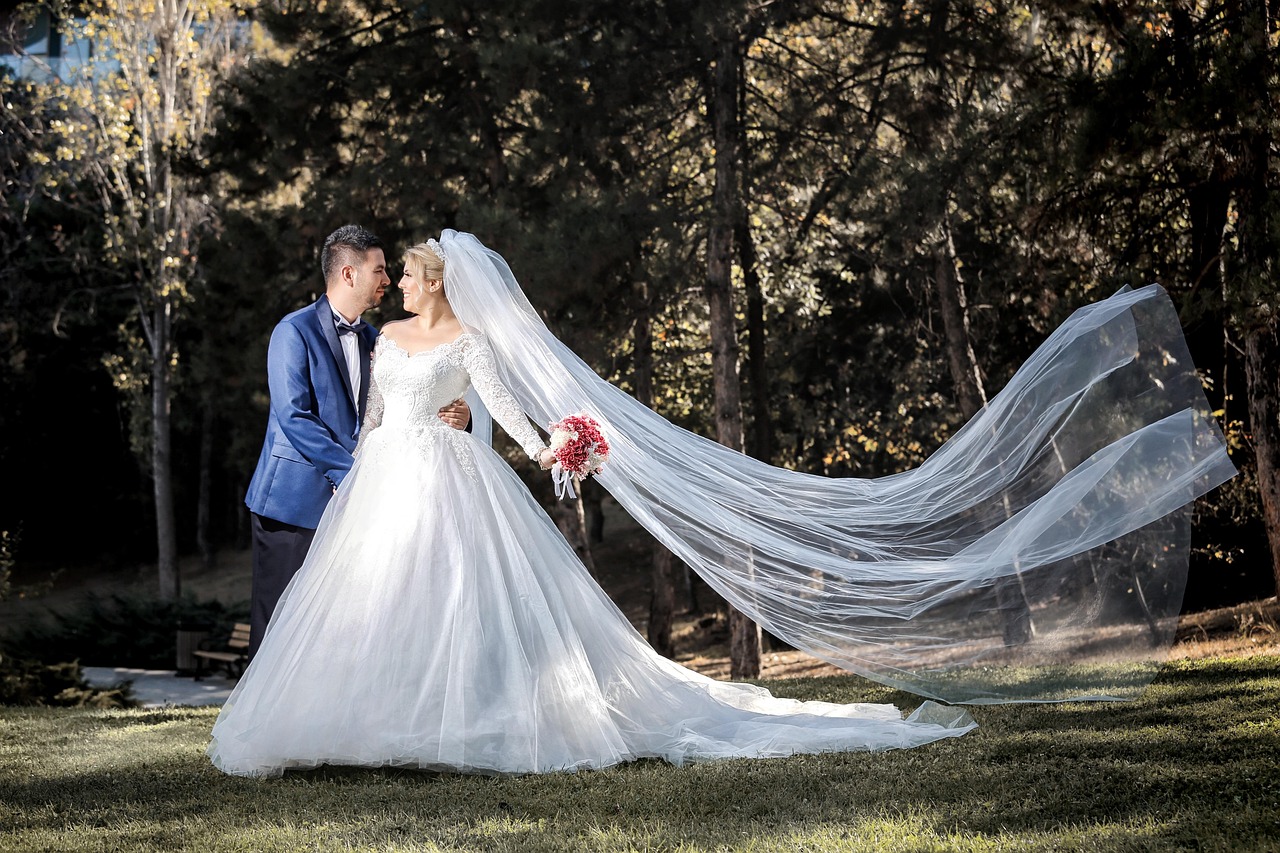
Conclusion: Making the Right Choice
Choosing the perfect engagement ring is a significant decision that symbolizes love and commitment between two individuals. As you embark on this journey, it is essential to consider various factors that will help you select a ring that truly reflects your unique relationship. This guide aims to provide you with the necessary insights to make an informed choice.
First and foremost, understanding the 4 Cs of Diamonds—Carat, Cut, Color, and Clarity—is crucial. Each of these characteristics plays a vital role in determining the quality and value of the diamond you choose. Take your time to learn about each aspect, as it will empower you to select a stone that not only fits your budget but also captures the essence of your love.
In addition to the diamond, the choice of metal for the band is equally important. Popular options include gold, platinum, and white gold. Each metal has its unique properties and aesthetic appeal, which can significantly influence the overall look and feel of the ring. Consider your partner’s style and preferences when making this choice.
Another important aspect is the setting style of the engagement ring. From classic solitaire to more intricate halo settings, the style you choose can enhance the beauty of the diamond and reflect your partner’s personality. Explore different options and think about what would resonate most with them.
Finally, setting a realistic budget is essential. Engagement rings come in a wide range of prices, so understanding average costs and exploring financing options can help you make a responsible purchase without compromising on quality.
In conclusion, selecting the perfect engagement ring is a journey that requires careful consideration and reflection. By taking into account the factors outlined in this guide, you can make an informed decision that not only symbolizes your love but also honors the unique bond you share with your partner.
Frequently Asked Questions
- What are the 4 Cs of diamonds?
The 4 Cs stand for Carat, Cut, Color, and Clarity. They are essential factors in determining the quality and value of a diamond. Understanding these can help you choose the right diamond for your engagement ring.
- How do I choose the right metal for the engagement ring band?
Choosing the right metal depends on personal style and durability. Popular options include gold, platinum, and white gold. Each metal has unique properties, so consider what best fits your partner’s taste and lifestyle.
- What is the average cost of an engagement ring?
On average, engagement rings can range from a few hundred to several thousand dollars. It’s important to set a budget that feels comfortable for you while ensuring you choose a quality ring that symbolizes your love.
- Should I buy a custom or ready-made engagement ring?
Custom rings offer a unique touch tailored to your partner’s style, while ready-made rings provide convenience and a variety of options. Consider your partner’s preferences and your budget when making this decision.
- How can I find the correct ring size?
Measuring ring size at home is straightforward. You can use a ring sizer or measure a ring your partner already wears. If you’re unsure, consider asking friends or family for help without revealing your plans!
- What maintenance does my engagement ring need?
Regular cleaning is key to keeping your ring sparkling. You can clean it at home with mild soap and water, but don’t forget to take it to a professional for inspection and deep cleaning periodically.

